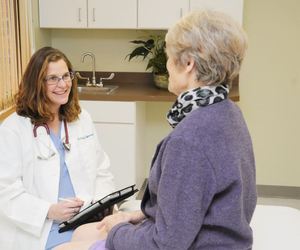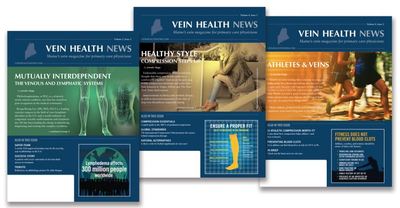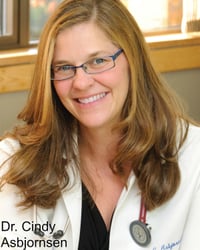 Although endovenous thermal ablation received FDA approval more than 15 years ago, there are still plenty of people, including physicians, who still think that the best treatment for varicose veins is vein stripping—if they’re treated at all. Who among us hasn’t heard of doctors who tell their patients “there is nothing you can do about aching legs,” or “it’s just cosmetic, don’t worry about it?”
Although endovenous thermal ablation received FDA approval more than 15 years ago, there are still plenty of people, including physicians, who still think that the best treatment for varicose veins is vein stripping—if they’re treated at all. Who among us hasn’t heard of doctors who tell their patients “there is nothing you can do about aching legs,” or “it’s just cosmetic, don’t worry about it?”
The American College of Phlebology (ACP), often in collaboration with other nonprofit and corporate entities, has significantly helped to educate the public about venous disease and its treatment through various public awareness tools, such as the patient resource book “Healthy Veins…Healthy Legs;” the PBS television special “Vein Health: Discoveries, New Technologies and Breakthroughs;” plus the Healthy Veins podcast, vein self-assessment, and other online resources.
Despite the ACP’s prodigious efforts to raise awareness and understanding about venous disease, phlebologists in the field can’t rely solely on the ACP or national campaigns to spread the word—education must start at the grassroots. But to be effective, you’ll need to get specific and creative.
Define your community
The first step is to ask: Who exactly is in your community? This is key for effective grassroots outreach, because the more informed you are about your community, the more specific you can be when you communicate with them.
I found that targeting the medical community was the logical place to start. For example, there are more than 1,500 family practice doctors in Maine where I practice. When we first started reaching out to that segment of the community, it was a reasonable number to work with.
To make it more manageable, we continued to narrow down that number based on geography. When doing this type of outreach, it’s beneficial to focus on a number of physicians who you think you can affect and influence. For a small business, which is what many vein practices are, 1,000 is often a manageable number. But that number can change depending on the size of your targeted area. However, whether you live in Manhattan, Boise, or Honolulu, take into account which doctors are within your 10-100 mile radius.
If you’ve already taken this step and gathered information about your community, how long has it been since you’ve looked at your list? Has anyone retired? Who is new to the scene? It may be an opportune time to revisit your list.
Once you determine who you’ll be communicating with, you’ll need to decide what to communicate and, of course, how you’ll communicate. Here’s where you get creative.
Get the word out
When I first opened my practice, I had three main goals: exceptional patient care, advancing the standard of venous care through research, and educating my community about vein health. While each of these aims is important, public education has evolved into a great passion.
In the beginning, I focused my educational efforts on other physicians, especially family practice doctors. I believed that my greatest impact could be made connecting with them, certainly because they are the direct link to the patient, but also because so many primary care physicians lack current information about venous care.
I sent letters of introduction, invited physicians to coffee, and offered to talk over lunch. It won’t surprise you to hear that I didn’t receive much of a response.
“Who else in my community is looking at legs and feet? How can I tell them more about vein health?”
My solution was to use a portion of our marketing budget to create a publication that targets family practice physicians to teach them about vein health and the ways in which they can help their patients with venous disease.
I wanted it to be brief and easy to read, but also professional-looking and full of sound, well-researched information. I worked with a local design agency but kept things simple, while focusing heavily on producing content that my physician audience would value.
The result was Vein Health News, a concise, informative medical publication that we produce two to three times a year. Each issue explores a variety of vein health topics, such as the basics of venous reflux, vein health and aging, compression therapy, venous ulcers, phlebolymphedema, and DVT. There is a column called “One Patient’s Perspective,” which highlights a patient and his or her experience with vein treatment. Another column talks about current vein technologies and “tools of the trade.”
We distribute Vein Health News to about 1,500 people. Although we originally intended the magazine to be a resource for health care professionals, we quickly discovered that patients loved it too. In fact, it’s become one of my most valuable teaching tools in the office.
Now, I’m not suggesting that you need to start a magazine, or that it’s the best idea for your practice and community. What I am suggesting is that you engage in a structured, creative approach to educating your community about vein care. Does your practice have a compelling pamphlet or handout that simply and clearly explains what vein disease is? Can you add a physician-to-physician communication that doesn’t sound like a typical cover letter, but rather one that speaks from the heart about your passion for vein care? Can you create an informational piece that tells primary care physicians what they should be looking for in patients and what they should do if they encounter a venous issue? What can be your teaching tool or tools?

Shift your focus
I’ve focused a lot on doctors, but don’t forget about the other health care providers in your community. Nurses, physician’s assistants, and other allied health professionals are also caring for patients who have venous disease. When I first entered the field of phlebology, I began to see venous disease in the legs and feet all around me. Sound familiar? I also knew that these people could have a better quality of life if they sought treatment.
So I started thinking: Who else in my community is looking at legs and feet? How can I tell them more about vein health?
This shift in focus has led to some interesting outreach and a few unexpected partnerships. For instance, less than a mile from my practice there is a medically oriented gym that also has a physical therapy component. We brought them issues of Vein Health News and offered to talk with their team of physical therapists and fitness instructors about how to identify venous disease and what can be done about it.
It was such a fruitful discussion that we’ve since reached out to other physical therapists and fitness centers. That type of outreach has resulted in several more informational roundtables and, as a consequence, more people learning about vein disease and modern treatments.
Another example of creative public education also involves physical therapists—and VEIN Magazine! In 2014, VEIN published an article written by a physical therapist about gait assessment for patients with venous dysfunction. With permission, we reprinted the article and mailed it, along with a cover letter, to 80 PTs in our community.
We received feedback from a few of them, but more importantly, a highly-targeted segment of our community received useful, relevant information they may not have gotten anywhere else.
One recent outreach that I particularly enjoyed was when our practice sponsored a community 5K race that raised money for a local children’s fitness nonprofit. This gave us a chance to talk with athletic people, a segment of our community that may be at risk for venous disease but is often overlooked because of their youth or high level of physical fitness.
We had an informational table at the finish line, where we met members of our community in an upbeat and fun setting. Our staff also participated in the 5K, so it also became an opportunity for team building.
Worth the risk

Regardless of your enthusiasm, not all outreach efforts will be a homerun. In one instance, our practice was in touch with the owner of a wellness center that specialized in massage. She invited me to come speak about venous disease with a small group of her massage therapists. With these types of roundtable discussions, I measure success by the level of engagement by the group.
In this case, group interaction was low and questions were few. I had expected a lively conversation, but received a lot of blank looks.
I don’t consider the attempt a complete loss, however, because I connected with at least one individual who didn’t know anything about veins or venous disease. And chances are good that the next time one of those therapists encounters a client with venous disease symptoms, she or he will recall our meeting and suggest that the client seek treatment. (As a side note, many of the places we’ve reached out to keep our magazine or other educational pieces on file so that they can be a resource to their clients, should the need arise.)
One educational effort turned out to be very successful. Returning to the theme of shifting your focus, don’t forget that people who sell shoes see legs and feet all day long, which means they likely see vein disease. We reached out to a 101-year-old retail shoe chain in Maine that takes great care in educating their employees—and their “guests,” as they refer to their customers—about pedorthics and foot health. I went to speak with the staff during one of their quarterly trainings.
The conversation was outstanding, with many questions about work shoes and boots compressing veins, as well as the value of a graduated stocking. The store currently sells a wide variety of stylish 20-30 mm Hg knee-highs.
We enjoyed such a lively discussion that we continue to have a strong relationship today. What’s more, the director of education for the stores is on the board of the Pedorthic Footcare Association (PFA). I was invited to write an article about graduated compression therapy for the PFA’s trade publication and look forward to contributing more articles in the future. I can’t think of a better example of how to creatively define the parameters of your community.
Another valuable lesson I learned from the shoe store experience is to pay special attention to health partners (i.e., other professionals who look at legs and feet) who invest in education themselves. They will likely be a receptive and responsive audience.
“Spreading the word about vein health becomes an attitude that pervades the entire practice, and patient care certainly improves because of it.”
On the topic of foot health, it’s worth noting that my practice is continually reaching out to podiatrists in our community. At first I was surprised by how closely I worked with some podiatrists who are treating foot problems in conjunction with vein problems. However, podiatry is a natural link to what we do in phlebology, and I often work with the same podiatrists to help solve a patient’s lower limb problems. This is similar to how I, like many vein and vascular specialists, work with wound care centers.
While podiatrists are an obvious fit for grassroots vein care education, there are a number of nontraditional practitioners who are worth considering. Remember: Who in your community is looking at legs and feet? I’ve already mentioned massage therapists, but what about acupuncturists, yoga teachers, or Reiki practitioners? Wellness practices like these may or may not be your cup of tea, but healing and good health— including leg health—is a philosophy we all share.
The educated patient
There’s a whole other constituency that I haven’t mentioned yet: patients. Helping patients understand the impact of vein health on their overall well-being is my most important duty, and I devote much time to educating patients on what’s happening to them, as well as guiding them toward the best possible treatment that will meet their health goals.
I’ve been asked if there are any metrics to show how my approaches to education enhance patient care. One answer might be to look at the number of our appointments. We do very little advertising, yet our appointment schedule is full. I believe much of this success is a result of our commitment to education. Another important gauge is how the patients themselves regard and receive treatment.
I regularly see patients who have had past treatment but have no idea what they’ve had done. I educate all my patients about their problem and options for treatment, and often I hand out issues of the Vein Health News magazine to use as an educational tool. I find that when I share relevant material with them, patients will often ask me thoughtful questions. When a patient leaves my practice, they know exactly what the problem was, how we treated it, and awareness of their vein health into the future.
In terms of enhanced patient care, I’ve also found that making education a top priority influences the rest of my staff. Spreading the word about vein health becomes an attitude that pervades the entire practice, and patient care certainly improves because of it.
Our belief that people with venous issues should have the knowledge to make good, informed decisions about their leg health is consistent with the expectations of today’s consumer-patient. They expect to be educated by their doctors, and when they take to the Internet to find information about their condition, it’s our duty to make sure that the facts are correct and relevant.
We’ve created several informational pieces for current and prospective patients, including an e-article about women and veins, which we shared with local ob-gyns and promoted on Facebook to women in our area. Another piece we call "Perspectives" is a collection of patient stories, testimonials, and before-and-after pictures. It has served as a useful tool for providing patients with context and a better understanding of the various procedures.
I want to touch briefly on online tools and how they continue to play an important role in public education. A website is a baseline requirement; it doesn’t have to be fancy, but it does have to be well-organized and contain reliable information. We’ve invested in a significant amount of original content for our website so that patients and physicians have, in one place, a wealth of information about venous disease and care. We include a number of links to other trusted sites, such as the ACP and the American Board of Venous & Lymphatic Medicine.
We also have a blog that we post to a few times a month, sometimes repurposing previously written material in shorter, more “bite-sized” chunks to suit the blog format. As for social media, our approach has been very simple: Our practice maintains a Facebook page, where we periodically post educational articles. We monitor the page for comments or questions from people, although we don’t receive many.
“Our belief that people with venous issues should have the knowledge to make good, informed decisions about their leg health is consistent with the expectations of today’s consumer-patient.”
Make it count
Regardless of the group or individual you’re educating, there’s one more thing to bear in mind: tailor your message to the audience. The basics of venous reflux or sclerotherapy may not change, but the concerns of your audience will vary. If you’re speaking with physical therapists, for example, the issues they encounter will be quite different than that of an obstetrician or doula. Likewise, a young, athletic patient will have much different needs than an older patient with a history of lymphedema. If you speak to your listeners’ experience, they will be more inclined to actually hear you.
In the end, as long as persistent myths and outdated information about vein care exist, education must be an active and consistent endeavor for us, the professionals on the front line. I’ve outlined plenty of tactics here, but don’t forget the overarching strategy: know your community and be inventive and adventurous with how you educate.
I hope this has served to broaden your thinking about what “counts” as education and what your educational efforts could look like. I encourage you to try some new ideas! You don’t have to do them all at once—in fact, you shouldn’t. Start with what makes sense for your practice in your community, keep track of (and repeat) what works well, and take note of lessons you learn from efforts that don’t work as well.
If half the people who read this reach out to a new group, talk about creative outreach at a staff meeting, or even shift their perspective a little—I think it would be a big step forward for phlebology.


